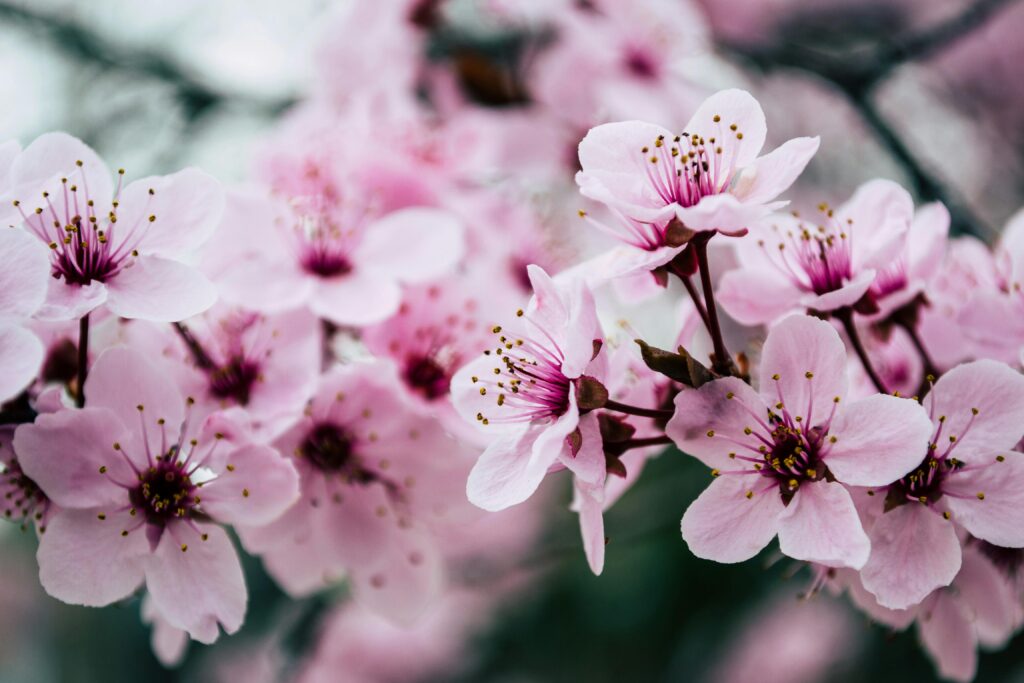Understanding the Risks: Are Cherry Blossoms Harmful to Dogs?

As a conscientious pet owner, safeguarding your furry friend from potential dangers is always a priority. With Spring upon us, the question often arises: “Are cherry blossoms harmful to dogs?” In short, yes, cherry blossoms, along with other parts of the cherry tree, can indeed pose risks to dogs. Let’s delve into this topic further to gain a comprehensive understanding of the hazards and proactive measures you can implement to protect your canine companion.
Unveiling the Hazards of Cherry Blossoms for Dogs
Beyond their captivating beauty, cherry blossoms harbor hidden perils for our four-legged friends. The cherry tree, encompassing its blossoms, leaves, and seeds, contains cyanogenic glycosides. These compounds have the potential to generate cyanide upon metabolism, leading to cyanide poisoning in dogs. While all components of the tree harbor these harmful compounds, the leaves and seeds contain the highest concentrations.
Recognizing Symptoms of Cherry Blossom Poisoning
If your dog consumes cherry blossoms or other parts of the cherry tree, they may exhibit a spectrum of symptoms, varying based on the quantity ingested and your dog’s size. Early indications of cyanide poisoning often manifest as gastrointestinal distress, including vomiting, diarrhea, and abdominal discomfort. Additionally, symptoms such as muscle spasms, excessive panting, difficulty breathing, and reddened gums may ensue, signaling inadequate oxygen delivery to the body’s tissues.
As poisoning progresses, more severe manifestations such as dilated pupils, escalated heart rate, and shock may become evident. In extreme cases, ingestion of cherry blossoms can precipitate seizures, coma, and even fatalities. Hence, prompt veterinary intervention is imperative if you suspect your dog has ingested any part of a cherry tree.
Immediate Actions to Take in Case of Ingestion
Swift action is paramount when dealing with potential cherry blossom poisoning. If ingestion is suspected, promptly remove any residual plant material from your dog’s mouth, if feasible. Immediately contact an emergency veterinarian. Refrain from inducing vomiting unless directed by a professional, as this could exacerbate the situation.
While en route to the emergency facility, it’s advisable to reach out to a poison control hotline to initiate a case number for the attending medical team. This facilitates the provision of optimal and current care for your pet. Contact Pet Poison Helpline at (855) 764-7661 or the ASPCA Animal Poison Control Center at (888) 426-4435. Provide the assigned case number and callback details to the medical team upon arrival.
Preventing Cherry Blossom Poisoning in Dogs
Prevention remains the cornerstone in mitigating the risk of cherry blossom poisoning in dogs. During cherry blossom season, exercise vigilant supervision when your dog is outdoors. When walking near cherry trees, keep your dog leashed to deter them from consuming fallen blossoms or leaves.
Regularly inspect your yard for fallen cherry blossoms or leaves, promptly removing them. If cherry trees adorn your premises, consider erecting barriers or establishing a designated play area for your dog devoid of potentially harmful flora.
Fostering a Safe Environment during Cherry Blossom Season
Ensuring a safe environment for your dog extends beyond physical modifications to your yard. Training your dog to steer clear of certain areas or refrain from ingesting unknown substances can be advantageous. For dogs prone to scavenging, discussing basket muzzle training with your primary care veterinarian may reduce ingestion risks.
Moreover, educating yourself and your household about the potential hazards of cherry blossoms and other toxic plants can significantly mitigate accidental ingestions. Remember, your dog depends on you for their safety, underscoring the importance of maintaining a secure environment.
While cherry blossoms exude allure, they harbor substantial risks for our canine companions. By familiarizing yourself with the dangers and implementing preventive measures, you can ensure a safe and joyous cherry blossom season for your dog. Remember, if any concerns arise or if your dog exhibits signs of illness, promptly reach out to your local veterinarian or veterinary emergency hospital.


